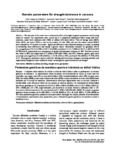Use este identificador para citar ou linkar para este item:
http://www.alice.cnptia.embrapa.br/alice/handle/doc/1022600Registro completo de metadados
| Campo DC | Valor | Idioma |
|---|---|---|
| dc.contributor.author | OLIVEIRA, E. J. de | pt_BR |
| dc.contributor.author | AIDAR, S. de T. | pt_BR |
| dc.contributor.author | MORGANTE, C. V. | pt_BR |
| dc.contributor.author | CHAVES, A. R. de M. | pt_BR |
| dc.contributor.author | CRUZ, J. L. | pt_BR |
| dc.contributor.author | COELHO FILHO, M. A. | pt_BR |
| dc.date.accessioned | 2015-08-24T11:11:11Z | pt_BR |
| dc.date.available | 2015-08-24T11:11:11Z | pt_BR |
| dc.date.created | 2015-08-24 | pt_BR |
| dc.date.issued | 2015 | pt_BR |
| dc.identifier.citation | Pesquisa Agropecuária Brasileira, Brasília, DF, v. 50, n. 3, p. 233-241, mar. 2015. | pt_BR |
| dc.identifier.issn | 0100-204X | pt_BR |
| dc.identifier.uri | http://www.alice.cnptia.embrapa.br/alice/handle/doc/1022600 | pt_BR |
| dc.description | The objective of this work was to evaluate the effect of drought on genetic parameters and breeding values of cassava. The experiments were carried out in a completely randomized block design with three replicates, under field conditions with (WD) or without (FI) water deficit. Yield of storage roots (RoY), shoot (ShY), and starch (StY), as well as the number of roots (NR), and root dry matter content (DMC) were evaluated in 47 cassava accessions. Significant differences were observed among accessions; according to heritability, these differences had mostly a genetic nature. Heritability estimates for genotypic effects ( ) ranged from 0.25±0.12 (NR) to 0.60±0.18 (DMC), and from 0.51±0.17 (NR) to 0.80±0.21 (RoY and StY) for WD and FI, respectively, as a consequence of greater environmental influence on WD. Selective accuracy was lower in WD, and ranged from 0.71 (NR) to 0.89 (RoY, DMC, and StY). However, genetic gains were quite high and ranged from 24.43% (DMC) to 113.41% (StY), in WD, and from 8.5% (DMC) to 75.70% (StY) in FI. These genetic parameters may be useful for defining which selection strategies, breeding methods, and experimental designs are more suitable to obtain cassava genetic gains for tolerance to drought. | pt_BR |
| dc.language.iso | eng | eng |
| dc.rights | openAccess | eng |
| dc.subject | Estresse hídrico | pt_BR |
| dc.subject | Melhoramento de planta | pt_BR |
| dc.title | Genetic parameters for drought-tolerance in cassava. | pt_BR |
| dc.type | Artigo de periódico | pt_BR |
| dc.date.updated | 2016-01-28T11:11:11Z | pt_BR |
| dc.subject.thesagro | Mandioca | pt_BR |
| dc.subject.thesagro | Melhoramento vegetal | pt_BR |
| dc.subject.thesagro | Manihot Esculenta | pt_BR |
| dc.subject.nalthesaurus | Breeding | pt_BR |
| dc.subject.nalthesaurus | Cassava | pt_BR |
| dc.subject.nalthesaurus | Water stress | pt_BR |
| riaa.ainfo.id | 1022600 | pt_BR |
| riaa.ainfo.lastupdate | 2016-01-28 | pt_BR |
| dc.identifier.doi | 10.1590/S0100-204X2015000300007 | pt_BR |
| dc.contributor.institution | EDER JORGE DE OLIVEIRA, CNPMF; SAULO DE TARSO AIDAR, CPATSA; CAROLINA VIANNA MORGANTE, CPATSA; AGNALDO RODRIGUES DE MELO CHAVES, CPATSA; JAILSON LOPES CRUZ, CNPMF; MAURICIO ANTONIO COELHO FILHO, CNPMF. | pt_BR |
| Aparece nas coleções: | Artigo em periódico indexado (CPATSA)  | |
Arquivos associados a este item:
| Arquivo | Descrição | Tamanho | Formato | |
|---|---|---|---|---|
| Agnaldo2015.pdf | 425,19 kB | Adobe PDF |  Visualizar/Abrir |









